
Retrospective
The SCHIRN is dedicating the world’s first comprehensive solo exhibition to the pioneer of the Dada movement, Suzanne Duchamp (1889–1963). The retrospective shows her multifaceted oeuvre as an artist whose work extended over a period of fifty years and who contributed to the development of Dadaism during the 1910s and 1920s.
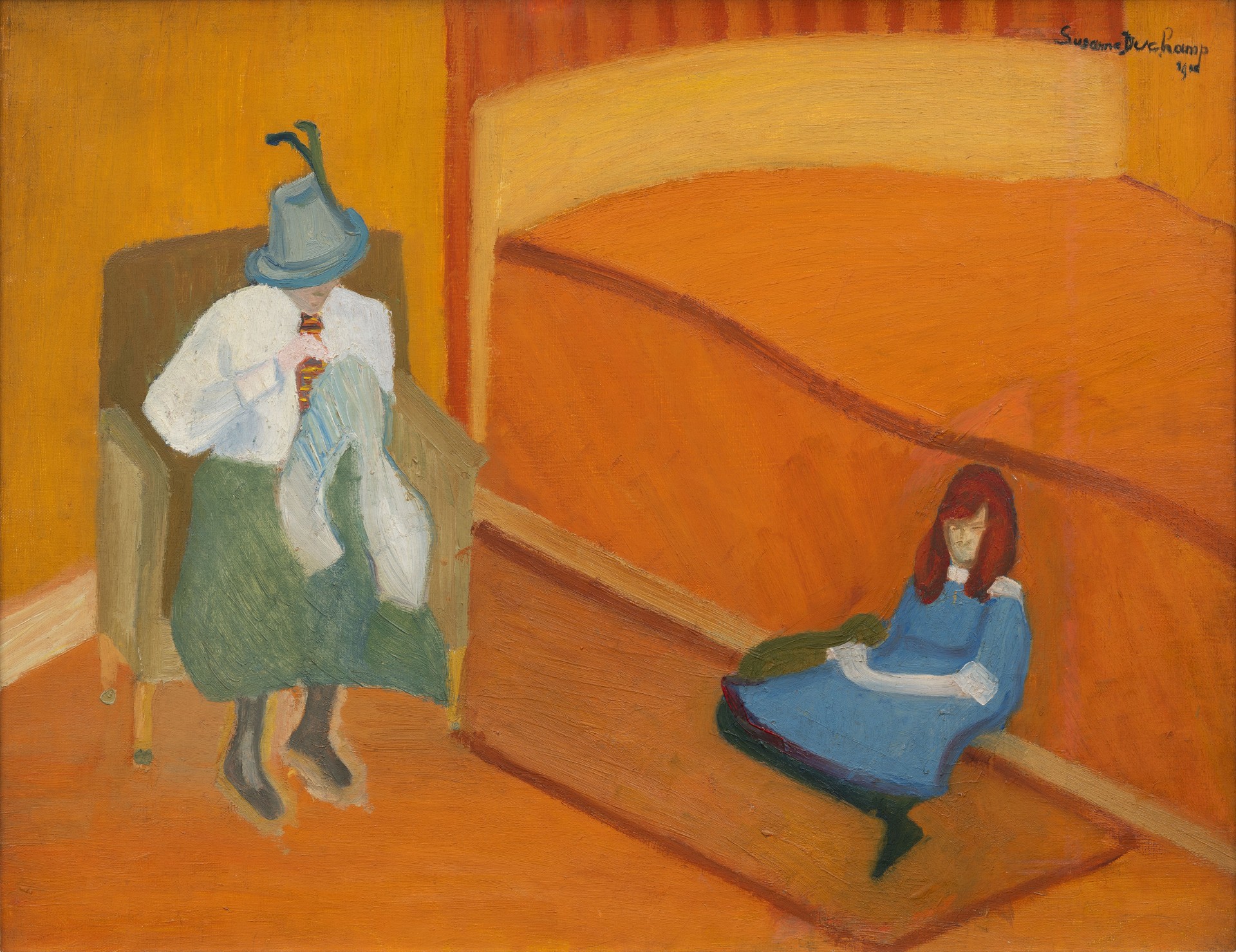 Suzanne Duchamp, Intimité (Intimacy), 1911, Oil on canvas, 50 × 65 cmPrivate collection / © Suzanne Duchamp / VG Bild-Kunst, Bonn 2025
Suzanne Duchamp, Intimité (Intimacy), 1911, Oil on canvas, 50 × 65 cmPrivate collection / © Suzanne Duchamp / VG Bild-Kunst, Bonn 2025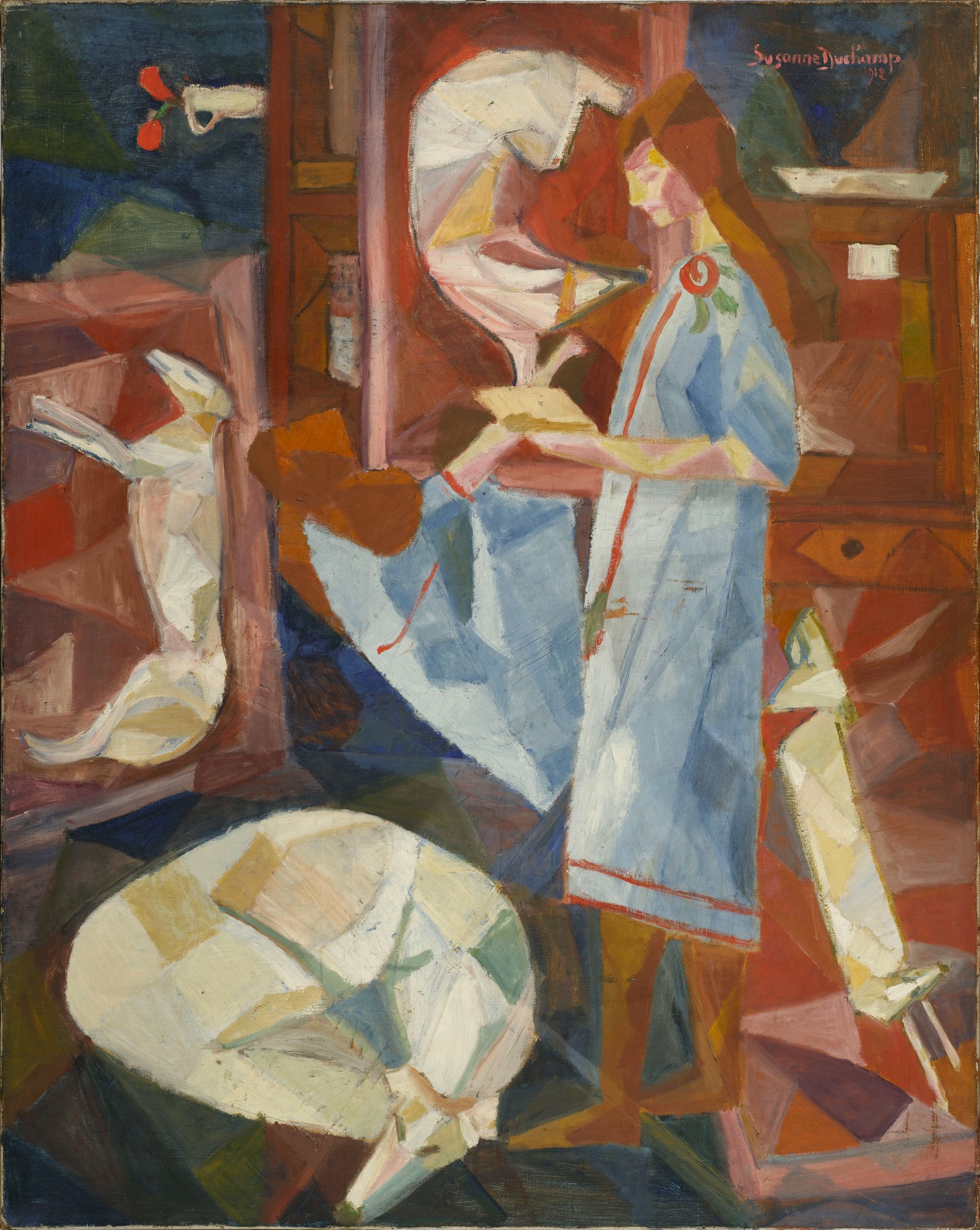 Suzanne Duchamp, Jeune Fille au Chien (Young Girl with Dog), 1912, Oil on canvas, 92 × 73 cmentre Pompidou, Paris, MNAM-CCI; En dépôt depuis 2013: Musée des Beaux-Arts de Rouen / bpk / CNAC-MNAM / Bertrand Prévost / © Suzanne Duchamp / VG Bild-Kunst, Bonn 2025
Suzanne Duchamp, Jeune Fille au Chien (Young Girl with Dog), 1912, Oil on canvas, 92 × 73 cmentre Pompidou, Paris, MNAM-CCI; En dépôt depuis 2013: Musée des Beaux-Arts de Rouen / bpk / CNAC-MNAM / Bertrand Prévost / © Suzanne Duchamp / VG Bild-Kunst, Bonn 2025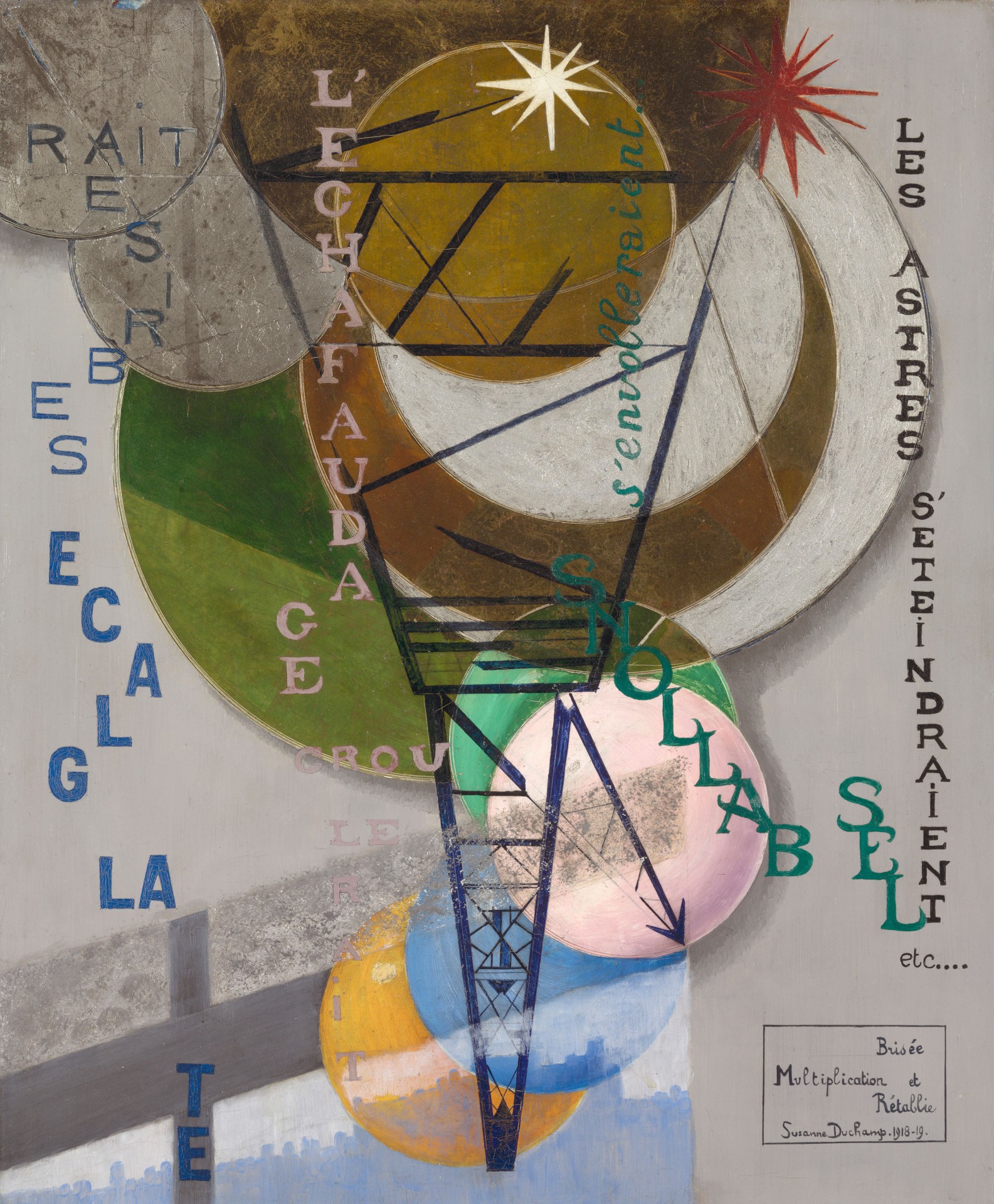 Suzanne Duchamp, Multiplication Brisée et Rétablié (Broken and Restored Multiplication), 1918/19, Oil and silver paper on canvas, 61 × 50 cmbpk / The Art Institute of Chicago / Art Resource, NY / © Suzanne Duchamp / VG Bild-Kunst, Bonn 2025
Suzanne Duchamp, Multiplication Brisée et Rétablié (Broken and Restored Multiplication), 1918/19, Oil and silver paper on canvas, 61 × 50 cmbpk / The Art Institute of Chicago / Art Resource, NY / © Suzanne Duchamp / VG Bild-Kunst, Bonn 2025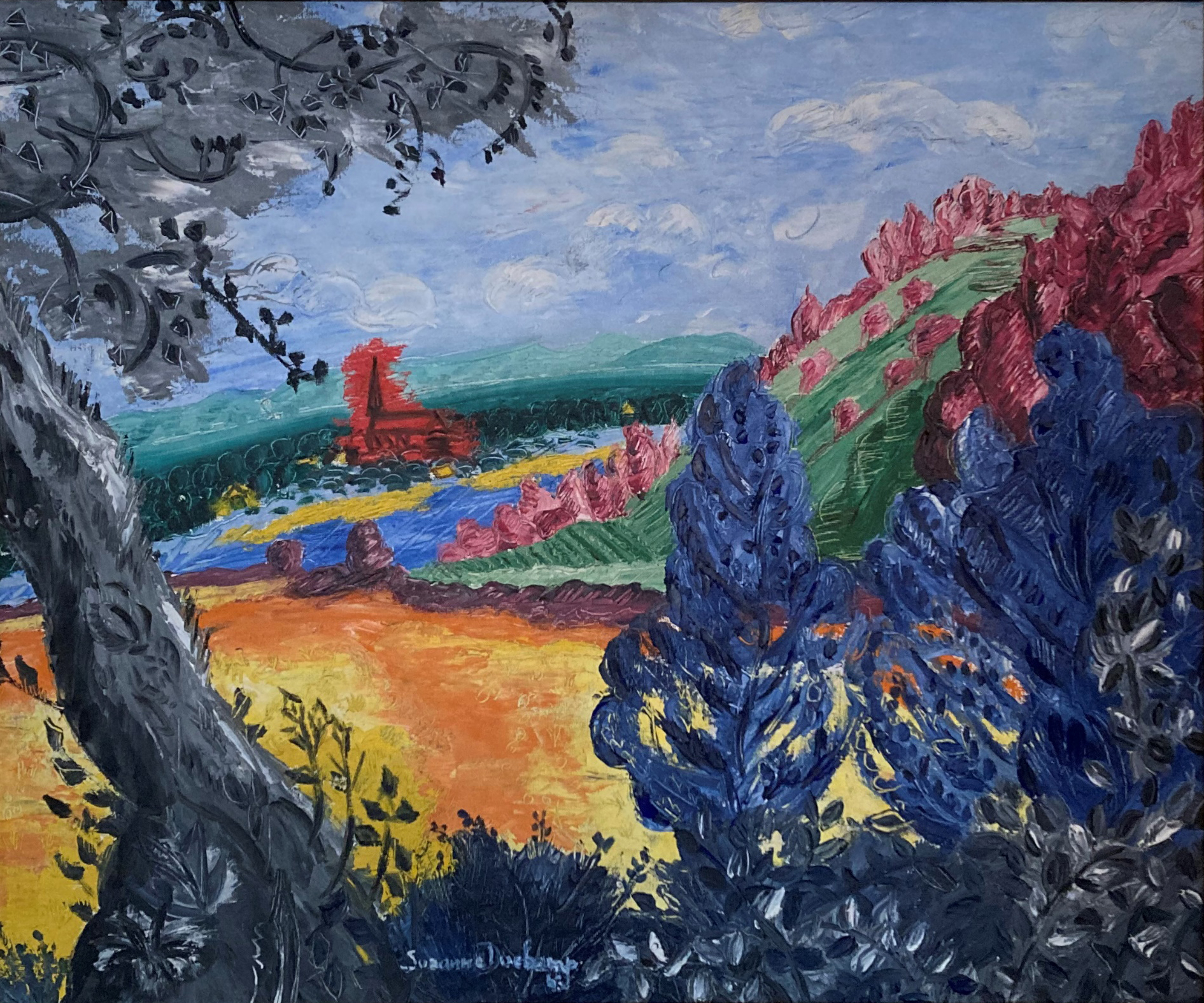 Suzanne Duchamp, Sans Titre (Paysage) (Untitled [Landscape]), 1943, Oil on canvas, 53 × 65 cmCollection of Scott C. Magid / © Suzanne Duchamp / VG Bild-Kunst, Bonn 2025
Suzanne Duchamp, Sans Titre (Paysage) (Untitled [Landscape]), 1943, Oil on canvas, 53 × 65 cmCollection of Scott C. Magid / © Suzanne Duchamp / VG Bild-Kunst, Bonn 2025- Suzanne Duchamp, Lorenzo Picabia, c. 1927, Oil on canvas, 60.1 × 50.1 cmCollection of Scott C. Magid / © Suzanne Duchamp / VG Bild-Kunst, Bonn 2025
 Suzanne Duchamp, La Noce (The Wedding), 1924, Oil on canvas, 66 × 92.1 cmPrivate collection / © Suzanne Duchamp / VG Bild-Kunst, Bonn 2025
Suzanne Duchamp, La Noce (The Wedding), 1924, Oil on canvas, 66 × 92.1 cmPrivate collection / © Suzanne Duchamp / VG Bild-Kunst, Bonn 2025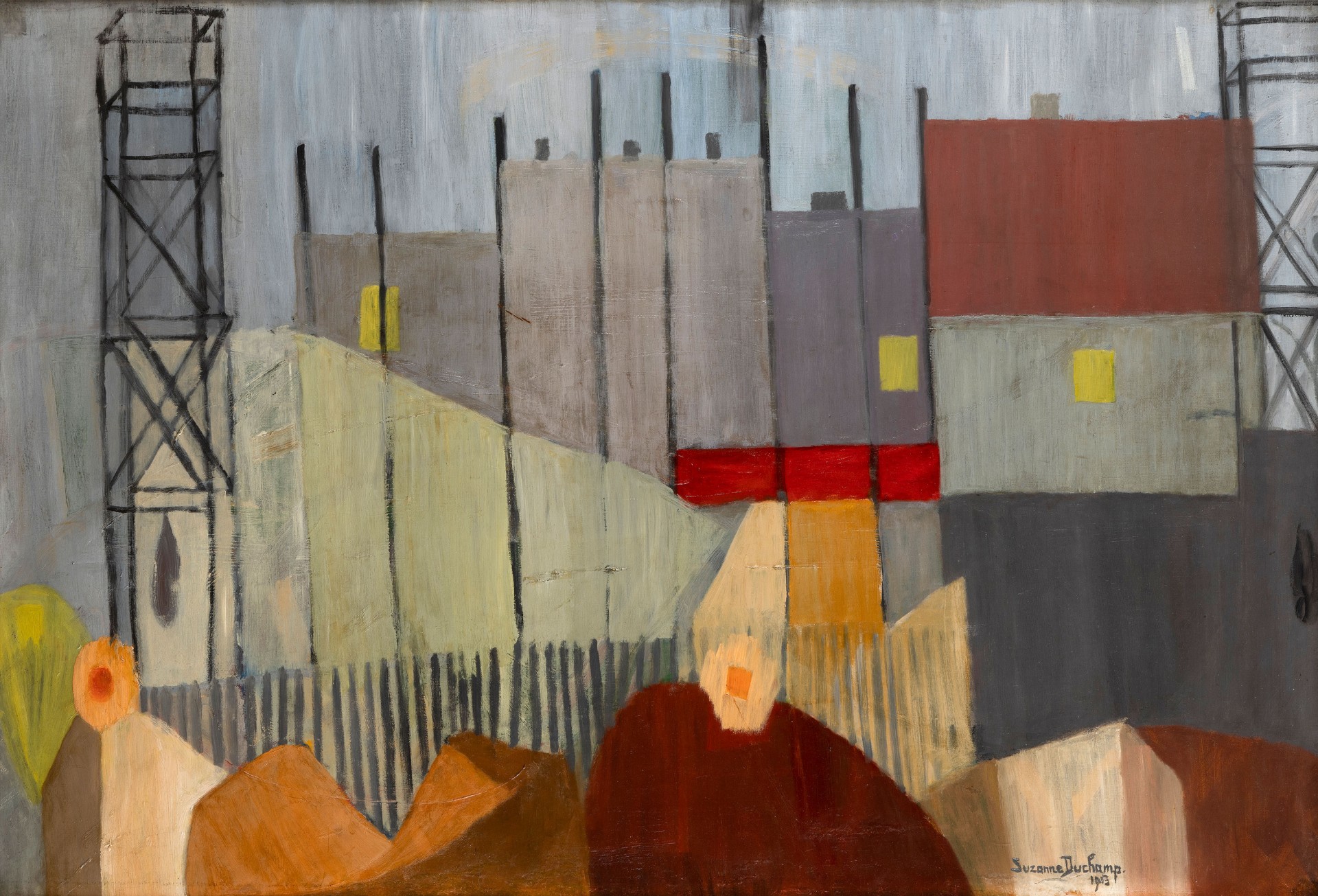 Suzanne Duchamp, Construction / Paysage Urbain (Urban Landscape), 1913, Oil on canvas, 89 × 130 cmPrivate collection / © Suzanne Duchamp / VG Bild-Kunst, Bonn 2025
Suzanne Duchamp, Construction / Paysage Urbain (Urban Landscape), 1913, Oil on canvas, 89 × 130 cmPrivate collection / © Suzanne Duchamp / VG Bild-Kunst, Bonn 2025
-
Supported by
Dr. Marschner Stiftung
Ernst Max von Grunelius-Stiftung -
With additional support by
Fontana Stiftung
Georg und Franziska Speyer´sche Hochschulstiftung
SCHIRN LIGA -
Media partner
Frankfurter Allgemeine Zeitung